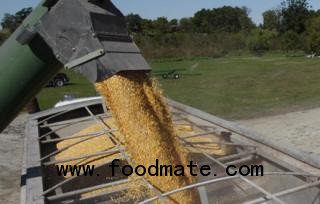For several reason, the U.S. role in the global corn trade is doing just that. An acreage base that's relatively static compared to other parts of the world, corn earmarked for use in ethanol, alternative feedstocks and overall acreage expansion in other nations are all adding up to a smaller share of exports for the U.S., says Purdue University ag economist.

"The U.S. has historically been a very important part of the international corn market. Prior to the 2007-08 food crisis and spike in commodity prices, the U.S. exported well over half the amount of corn that entered international markets," Abbott says in a university report. "Since then, the high prices have caused the rest of the world to expand their production and become more self-sufficient. Even if we get bigger corn crops in the future, it's likely that the demand in foreign markets will not soon recover to the level that it once reached."
Though the drought of 2012 is partly to blame for the slide this year, the U.S. will export less than half the corn (1.1 billion bushels) it did 4 years ago (2.4 billion bushels), Abbott says. He lays out 4 main reasons for the decline:
Ethanol. Production is slated for 13.8 billion gallons next year, up from 13.2 billion this year, for which 5.5 billion bushels of corn was used. "Roughly 40% of the corn that's produced in this country is used in ethanol, although some of it is later used as distillers grain for livestock feed," Abbott said. "That's up from about 10% to 12% five years ago.
The amount of corn that makes up the increase is more than we export."
Acreage. Though U.S. farmers have generally upped their corn acres in the last few years, it hasn't kept pace with that same increase abroad. South America's corn acreage has increased 53% and eastern Europe has boosted production by 24% in the last 2 decades, for example. "We haven't expanded overall planted area like the rest of the world.
Our acreage is basically flat," Abbott says.
Weather. Obviously, this year's drought has had the most profound effect on the U.S. share of the corn export market. Abbott points out domestic corn production is expected to shake out about 13% lower than last year, the lowest output in 6 years.
Prices. The U.S. has worked hard in the last few years to crack into new export markets -- and has had a measure of success in doing so -- but more demand drives up prices, and right now, competition's strengthening. "We've tried to accommodate the export markets by working to increase production, but we haven't managed to do that. We've had to keep feed use flat and watch exports shrink," Abbott says. "All the hard work we did to build export markets has been hurt by the high commodity prices of the last 4 or 5 years.
As a result, the world has figured out ways to meet their own needs. And with a couple of exceptions like China buying more soybeans, we're probably going to see weaker export demand in the future."





